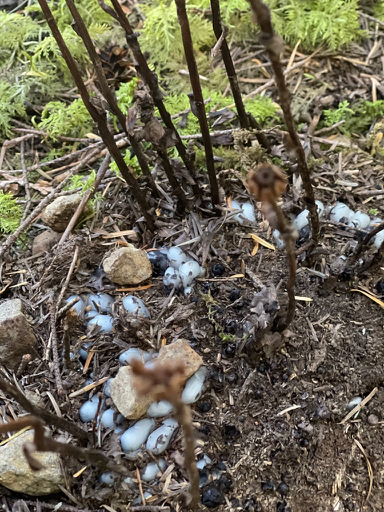By Ric Brewer
While we only have one species each of orca and elk in the Pacific NW, there are an estimated 245 described terrestrial slug and snail species sliming their way around here. Of these, there are a couple standouts one might see around the woods of Jefferson County.

The most dramatic and largest native Northwest snail is the Pacific sideband snail (Monadenia fidelis), with a shell diameter of 18-35 mm. Its flattened, coil shell sports bands of black, chestnut, and yellow around its perimeter. You may find them in the forest, particularly after a good rain. Living under leaf litter, they munch away at fungi and decaying organic matter, emitting a smell when disturbed. Maybe this is why another common name is the rotten garlic snail.

Our second charismatic snail candidate is the Oregon forest snail (Allogona townsendiana). Another flat, helix-shelled snail, it shares the same moist environment and diet as the Pacific sideband. As detritivores, they serve an important function by converting decaying matter into soil, a task they performed quite well prior to the appearance of the common earthworm, which first appeared in North America in the 1600s with European colonization. More snails are listed as threatened, endangered, or extinct than all birds, mammals, reptiles, amphibians, and fish put together!











